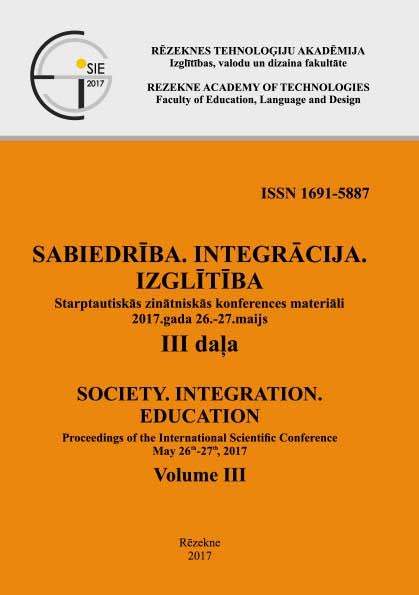THE EFFECT OF LOCAL VIBROSTIMULATION ON ELECTROMYOGRAPHY PARAMETERS IN ROWERS
DOI:
https://doi.org/10.17770/sie2017vol3.2321Keywords:
electromyography, local vibrostimulation, rowersAbstract
Local vibrostimulation (further in text - LV) is innovation as a part of training method that helps athletes to regain the power and get ready for next training faster. There are many discussions about how to increase moving speed in rowers. Many scientists research the possibilities of increasing moving speed in this sport. The following methods were used in the study: tests – Concept-2, LV manipulations, electromyography and mathematical statistics. The electromyography was made with Biometric LTD. LV manipulations were done to the muscles erector spinae, latisimus dorsi, teres major, teres minor, trapezius, infraspinatus, deltoideus, slenius capitis, triceps brachii, gluteus maximus, semitendinosus, biceps femoris, semimembranosus, castrocnemius, tendo calcaneus, rectus femoris, vastus lateralis, tensor fascia latae, vastus medialis, sarterius, ligamentum patellae, tibialis anterior, rectus abdominis, pectoralis major and biceps brachii. We using 100 Hz frequency, 2 – 4 mm amplitude and different pressure on the muscles. The total LV application time was 5 to 20 min. The obtained data were processed using mathematical statistics. The results: having stated the result difference before LV and after it. The results testify significant improvement of Concept-2 tests results and electromyography results, what is showed by the difference of the mean results. Comparing the results of the rowers of EG and CG they have differences in the left side muscle latissimus dorsi after the t-test where p>0.05, but stating the percentage of the mean result difference of this muscle it was found out that p>0.05 what also shows significant changes in the muscle biopotential (mV).Downloads
References
Hawkins, D. (2000). A new instrumentation system for training rowers. Journal of Biomechanics, 33(2), 241-245.
Hofmijster, M. J. (2010). Mechanics and energetics of rowing. Faculty of Human Movement Sciences, 153.
Kleshnev, V. (2010)a. Rowing biomechanics newsletter. Nr.107, Vol.10.
Kleshnev, V. (2010)b. Rowing biomechanic newsleter.Nr.114, Vol.10.
Kleshnev, V. (2011). A brief history of our development in force measurement area. Retrieved fromhttp://www.biorow.com/PS_tel_files/History%20of%20Force.pdf.
Knipše, G., at all (2009). Vēdera muskulatūras elektromiogrāfiskā aktivitāte fizisko vingrojumu laikā. Latvijas universitātes raksti – medicīna, 750 sējums. Lpp. 245. – 252.
Nilsson, J., Tesch, P., &Thorstensson, A. (1977). Fatigue and EMG of repeated fast voluntary contractions in man. ActaPhysiologica, 101(2), 194-198.
Nolte V. (2011). Rowing faster: serious training for serious rowers.Human Kinetics, Incorporated. P.107 – 110.
Nowicky, A. V., Burdett, R., & Horne, S. (2005). The impact of ergometer design on hip and trunk muscle activity patterns in elite rowers: an electromyographic assessment. Journal of Sports Science and Medicine, 4, 18-28.
Schaar, H., Mattes, K. (2010). Comparison of the electromiographic activity patterns of elite rowers on the rowing ergometer and the Dyno. University of Hamburg, Germany, department of human movement.


